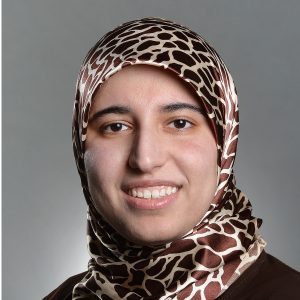
Dec. 4, 2019
Evaluation of chronic disease education & health information quality using online social networks & communities
Chronic diseases such as diabetes, cancer and mental illness are the leading causes of morbidity and disability. The total cost in the United States was $327 billion for diagnosed diabetes, 80.2 billion for cancer and $193.2 billion for serious mental illness. Chronic diseases rely a great deal on patient education and self-management and social media is an important tool for information dissemination in that regard. Diabetes, cancer and mental illness are among the top 10 searched diseases on social media, which is among the newly emerging Consumer to Consumer (C2C) tools. For instance, Twitter is increasingly becoming a space for…

Nov. 15, 2019
The power and challenges of single cell gene expression technology
For many common diseases, a significant percentage of patients simply do not respond effectively or have adverse side-effects to any given treatment. To more successfully focus our disease intervention targets, comparatively diverse species with high-resolution starting points are required. An understanding of cell type–specific variation in gene expression is key to deciphering the roles of genes in disease. Accordingly, newly developed single-cell methods have started to fill our gaps in knowledge of disease by allowing us to peer deeply into the molecular microenvironments of tissues and organs. Multiple lipid emulsion techniques for isolating and evaluating single cells have been developed;…

Nov. 5, 2019
Geospatial Context Big Table (GeoCBT): Facilitating Geospatial Analysis in Health Research
A consistent finding across health literature is that location-matters. Cancer incidence varies across scales from blocks to neighborhoods to regions. As well, a complex myriad of factors that can affect health outcomes also exists. In rural contexts, aging populations, health care access, sparse populations, environmental exposures, and infrastructure are components. In urban contexts, food-deserts, stress, and pollution (air, water, light, and noise) play possible roles. What is the interaction of all these factors? At what scale(s) is the context and association important? The collection, integration, and use of varied data are foundational to health research. However, time is wasted and…

Oct. 23, 2019
Evaluation of Provider Documentation Patterns as a Tool to Deliver Ongoing Patient-Centered Diabetes Education and Support
Diabetes is one of the most common chronic diseases in the world. As a disease with long term complications requiring changes in management, it requires ongoing diabetes self-management education and support (DSME/S). In the United States, however, only a small proportion of people with diabetes receive DSME/S. The diabetes education that providers deliver during follow up visits may be an important source for DSME/S. We collected 200 clinic notes for 100 adults with diabetes and studied the History of Present Illness (HPI) and Impression and Plan (I&P) sections. Using a codebook based on the seven principles of American Association of…

Oct. 23, 2019
Drug Repositioning for Subgroup discovery and Precision Medicine Implementation
Drug discovery is a high-cost, time-consuming, and labor-intensive process. With the declined approval rate for new drugs by the FDA, developing drug repositioning frameworks becomes crucial for improving patient care. Drug repositioning, known as old drugs for new uses, is an effective strategy to find new indications for existing drugs and is highly efficient, low-cost, and less risk. The proposed work is a network-based computational approach for subgroup cohort drug repositioning. Precision medicine is getting more attention to be applied in today’s healthcare system toward a more patient-centered system rather than a disease-based one. The phenotypic and genotypic variation among…

Oct. 22, 2019
MUIDSI Core Faculty Member, Dr. Laura Schopp, PIs Grant Helping Rural Areas
Dr. Laura Schopp, professor and chair of health psychology, received a $1.2 million grant from the US Health Resources and Services Administration to help fight the opioid epidemic. Read more……

Oct. 22, 2019
MUIDSI Core Faculty Member Blake Meyers Named Editor-in-Chief of “The Plant Cell”
Rockville, Maryland, October 21, 2019 – The American Society of Plant Biologists (ASPB) is pleased to announce the appointment of Blake C. Meyers to serve as editor-in-chief of The Plant Cell beginning January 1, 2020. Read More…

Oct. 16, 2019
Hierarchical agglomerative clustering of eusocial bee proteins
The assembly and annotation of the European Honey bee (Apis mellifera) genome has predicted more than 15,000 protein-coding genes and became the foundation for studies of nature and evolution of eusociality. Since then, other eusocial bee genomes have been sequenced, providing an excellent opportunity to seek additional insight into unique traits of eusocial bees at the genomic and proteomic level. We wish to build a non-redundant organization of protein sequences by applying an unsupervised hierarchical protein-clustering method to the protein sequences of 4 advanced eusocial honey bees and 2 primitively eusocial bumblebees. The clustering method will group proteins into clusters…

Oct. 8, 2019
Mutational Forks: Inferring Pathway Deregulation Based on Patient-Specific Genomics Profiles
The precise mechanism behind treatment resistance in cancer is still not fully understood. Despite advances in precision oncology, there is a lack of the tools that help to understand a mechanistic picture of treatment resistance in cancer patients. Existing enrichment methods heavily rely on quantitative data and limited to analysis of differentially expressed genes, ignoring crucial players that might be involved in this process. In order to tackle treatment resistance, the identification of deregulated flow of signal transduction is critical. Here, we introduce a bioinformatics framework that is capable of inferring deregulated flow of signal transduction given evidence-based knowledge about…